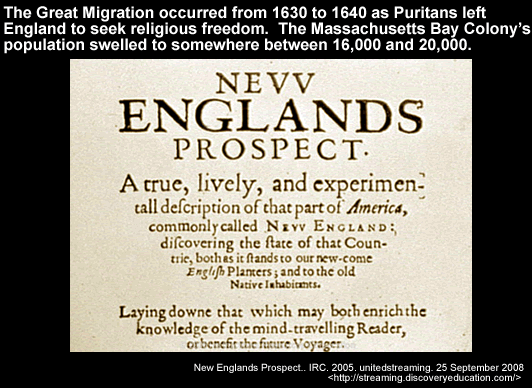.
Did You Know?
The first Thanksgiving was a weeklong celebration. It was declared a national holiday in 1863, by President Lincoln, and has since been celebrated on the last Thursday in November.
Overview
While the lure of gold and treasure led many people to the New World, religious freedom encouraged citizens from England to take a look at North America as an option for colonization. The Protestant Reformation and England's divorce from the Roman Catholic Church, left many English Protestants only wanting more reform of the new Church of England.
One such group, the Puritans, known for their Calvinist ideals, wanted to purify the Church of England of it Catholic practices. Discouraged by slow reform, one group of Puritans decided to "separate" from the church. In 1603, Puritan tensions were further heightened upon James I succession to the English throne. King James pressured the Puritan Separatists, to conform. After refusing to comply, the Separatists departed for Holland and after twelve years, decided to transplant their English customs to the New World. They arrived in Plymouth Bay in 1620 with approximately 100 settlers to colonize Plymouth, Massachusetts, the second permanent English settlement.
In 1630, the Non-Separatist Puritans in England, who had tried to reform the Anglican Church from within, felt religious pressure from the new crown, King Charles I. Nearly 1,000 settlers formed the Massachusetts Bay Company and headed for New England. Between 1630 and 1640, thousands left England in what is today known as "The Great Migration."

